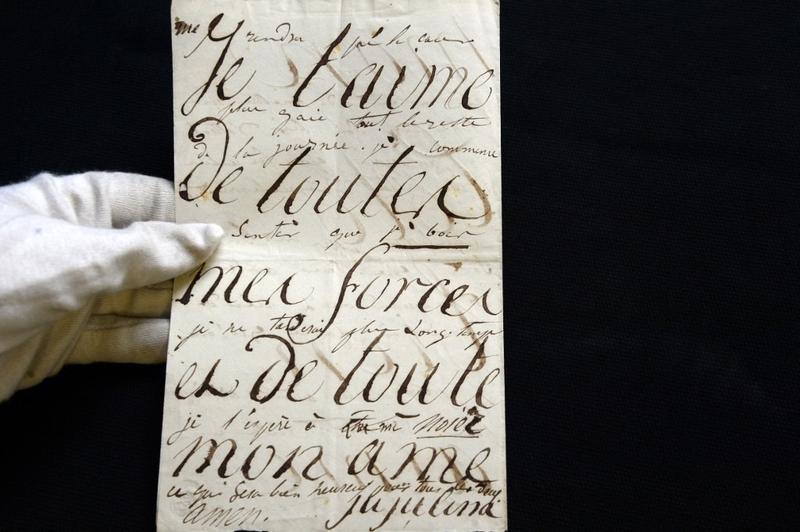 A photo shows a letter written on June 27, 1837 by Juliette Drouet (1806-1883), signed Jujuliana and dedicated to French writer Victor Hugo, on Nov 17, 2014 in Paris, before an auction sale of 1,500 documents written by famous women (queens, artists and writers). (BERTRAND GUAY / AFP)
A photo shows a letter written on June 27, 1837 by Juliette Drouet (1806-1883), signed Jujuliana and dedicated to French writer Victor Hugo, on Nov 17, 2014 in Paris, before an auction sale of 1,500 documents written by famous women (queens, artists and writers). (BERTRAND GUAY / AFP)
PARIS – Victor Hugo is well known around the world for his novels, but a simple visit to the famous French writer's Paris apartment would allow his fans to discover some of his other sides: a photographer, painter, and decorator with a taste for Chinese culture.
Hugo and Drouet's appreciation of chinoiserie and Chinese material culture arose during a period in Europe when there was a passionate love for Chinese imports, particularly ceramics from Guangdong, and the couple continued collecting chinoiserie even during their exile in Guernsey, according to Arudinet, director of the Houses of Victor Hugo, Paris/Guernsey
The apartment Hugo rented from 1832 to 1848 in Place des Vosges in central Paris, as well as his house on the Channel Island of Guernsey, now make up the Victor Hugo Museum, which showcases the writer's various talents throughout his life.
The famous Chinese Lounge in Hugo's Paris apartment is a good place to learn about a little-known aspect of his talent as a decorator.
Gerald Audinet, director of the Houses of Victor Hugo, Paris/Guernsey, told Xinhua that Hugo decorated a living room in his Guernsey house for his almost second wife Juliette Drouet. The Chinese Lounge was originally in that house.
ALSO READ: Shanghai show highlights genius of Victor Hugo
Hugo and Drouet's appreciation of chinoiserie and Chinese material culture arose during a period in Europe when there was a passionate love for Chinese imports, particularly ceramics from Guangdong, and the couple continued collecting chinoiserie even during their exile in Guernsey, according to Arudinet.
According to him, Hugo used a lot of woodcarving to decorate the Chinese Lounge. "Many Chinese decors are carved on wood and painted with red and gold paints," Audinet said.
"Often, it is him who came up with the idea of decorating these woodcarvings with patterns that he designed...he also often put the final details on the woodcarvings," he added.
Hugo also drew inspiration from lacquerware furniture, embroidered silks, and Chinese plates. Hugo decorated Drouet's dining room with Chinese ceramics, so her guests could see and discuss them, Audinet said.
For Audinet, it was the difference between Chinese and European arts that attracted Hugo to fall for the chinoiserie.
ALSO READ: Fire out but much work ahead for destroyed Notre Dame
To increase Hugo's influence in China, Audinet said that three exhibitions have been organized in China in recent years to present Hugo's life and works.


